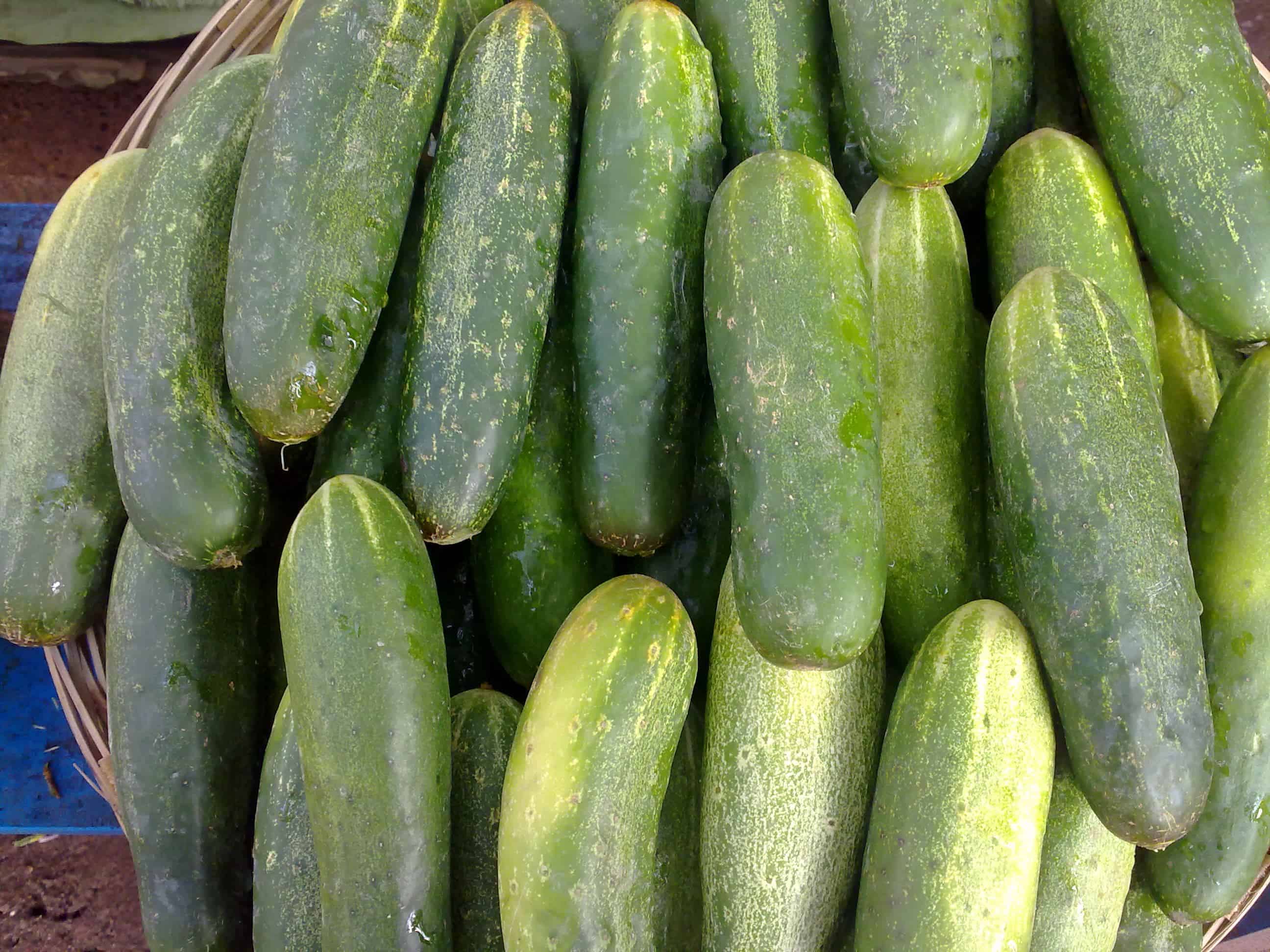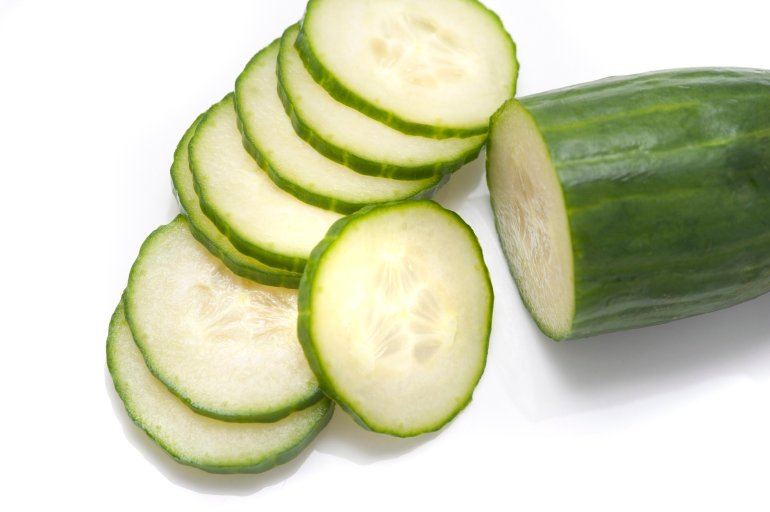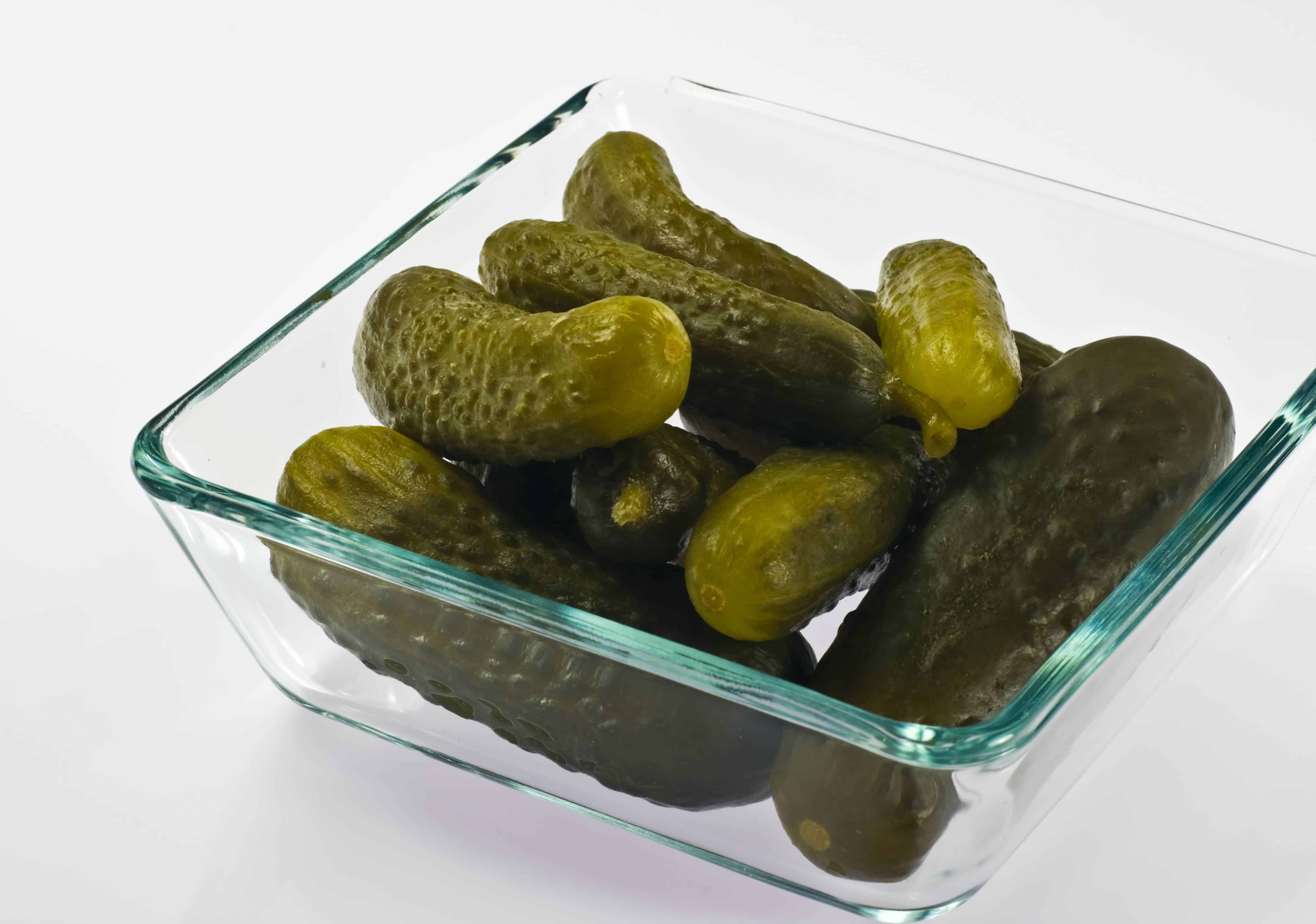Cucumber Fertilizer & Growing Guide
Today we take a look at Cucumbers. Want to know what type of fertilizer to use on cucumber plants? Watering instructions? Row spacing? Do you need to know how soon you should plant? Then read on!
Table of Contents:

Growing Conditions for Cucumbers
Full sun and evenly moist soil are both very important for growing cucumbers. They rely on a lot of water to get through the summer heat. 6.8 is the preferred soil pH, but they can go a little higher as well.
Cucurbits are a vegetable that does not respond well to root disturbances, so you would need to plant from seed or transplant very young new starts. If you choose to plant from seed, you must wait until the soil is above 60 degrees or they will not germinate in your gardens. Plant a full two weeks after the last frost date. Cucumbers do love the heat! In fact, you can improve gardening results by dressing the soil with a dark mulch that absorbs heat. In fact, you can use black plastic mulch to warm the soil and hold in moisture.

Planting and Germination
I can’t say it enough… Watch your calendar! Learn to wait AT LEAST two weeks after your last possible frost date before starting cucumbers or tomatoes! Give your plants at least 40″ of space, with 60″ being ideal. If you’re planting in rows with plenty of space in between the rows, you can plant cucumbers as close as 9″ apart. Thin to 18″ within the first few weeks.
Place each cucumber seed at a depth of 1 inches and gently water in. You might want to soak your seeds in a warm (80 degrees) spot for a few hours prior to planting. Trellising is highly advisable. These plants love to grow up, and it’s highly efficient to use the vertical space in your garden.
Trellis if possible – mulch, but beware slugs!
Use hog panels or tomato cages for an easy cucumber trellis. Once the space in planted, top dress with a dark mulch 2-3 weeks after emergence, and be sure to fertilize.
However, be careful not to attract slugs to your young plants with dead organic matter! I highly recommend waiting until the plants have several true leaves and are 4-6 inches tall before adding mulch.
Also, consider using beer traps and a ring of diatomaceous earth around young plants. The sweet smell of beer attracts slugs and the fall in and drown. It’s one of those old gardening methods that seems to work well. This should get your through the first few weeks of cucumber care.
The cucumber beetle is one of the primary pests you will contend with. Covering young plants with a light plastic row covering can disrupt their lifecycle.

Kaolin clay is a natural insecticide, but beware that it indiscriminately kill beneficial insects as well. Slugs are another common problem, but they do not like straw mulch and are heavy beer drinkers as we already mentioned. Slugs are easy enough to deal with if you have access to cheap beer and a saucer pan.
Squash Bugs
Squash bugs may also attack your seedlings, so be sure to practice crop rotation. Finally, you might also notice white powdery mold on the leaves. Apply a natural fungicide, and keep the leaves as dry as possible. Drip irrigation works best to limit fungal growth. Be sure to read on and find out what type of fertilizer to use on cucumber plants! I can’t stress enough just how important this is. Healthy plants resist pests.
Harvesting Guide for Cucumbers
If you let your cucumbers go too long, they can be bitter. This is especially difficult to manage in the hot summer. To say cucumbers are prolific is the understatement of the century. In June and July, expect to harvest daily to keep up with production. This is, of course, right when the tomatoes are going mad, so plan on grabbing some mozzarella and some good balsamic vinegar for a tasty cucumber and tomato salad that’s guaranteed to cool you off. For slicing cucumbers, let them get no more than 6-8 inches. Pickling cucumbers should be no more than 3-5 inches for harvest. Picking early will encourage the plant to produce more. Don’t pull the cucumbers from the vine, instead use a knife or scissors to avoid damaging them or causing stress. Harvesting cucumbers in the early morning or very late evening ensures the best flavor.

Pickles!
Speaking of harvest, you should probably find a good pickle recipe a few weeks before your plants start to produce. These things are going to go crazy towards the end of every June. I have literally harvested 100 lbs. of cukes in one afternoon! Plan accordingly.
What Type of Fertilizer to use on Cucumber Plants
We saved this question for last. Why? We want to provide you access to the best content, useful information and recommendations before we send you to our recommended product ideas! We’re a fertilizer review company after all, and we do want you to take our advice for your cucumbers. Having said all that, we hope you find this product application and crop guide useful. We recommend an excellent line of fertilizers by Neptune’s Harvest that only contain natural ingredients. These products feed the soil and reduce susceptibility to drought and stress. Of course, you could always stick with tried and true Miracle Gro since they do have an organic plant food option now.
How to Use
Mix 1 gallon Liquid Natural Fertilizer and 35 gallons of water. Apply as a fine mist with enough solution to thoroughly cover leaves (increase spray volume as crop develops to ensure thorough coverage). Perform first application when plants are 3-5 inches tall. Repeat when plants begin to run. Increase rate if leaves are chlorotic.
Plants may respond to another application of Natural Fertilizer at first bloom, depending on other inputs….. To extend the season for fresh-market cucumbers, apply Kelp and Sulfate of Potash late in the season and up to 3 weeks before final harvest. Use a per-acre mixture of 1 quart Liquid Kelp and 20 gallons of water. Apply as a fine mist with enough solution to cover leaves.
Rates vary according to soil fertility and other inputs used. Higher dilution rates are more effective than lower dilution rates. Two or three lighter applications may be more effective than one heavy application. If other constraints only allow access to one trip over the field, do not exceed a 3 percent dilution rate (3 gallons liquid fertilizers to 97 gallons water).
To reduce susceptibility to attack of insects and disease-causing organisms, apply a per-acre mixture of 1 gallon Natural Fertilizer or 1 quart Kelp and Sulfate of Potash and 20 gallons of water when signs of infestation become apparent.
Conclusion
So, now you know what type of fertilizer to use on cucumber plants. You’ve learned about planting, germination, pest control, and harvesting. You’re ready to get out there and get stuff done! what a miracle 😄
Be sure to access our store and stock up on fertilizer ideas before you plant. That way, you can correct a nutrient deficiency on the spot before you lose any plants. Reach out to us at sales@fertilizerforless.com if you need any help. Now, get out there and grow!
Where Do I Buy Kaolin Clay & Diatomaceous Earth Powder for Cucumbers?







